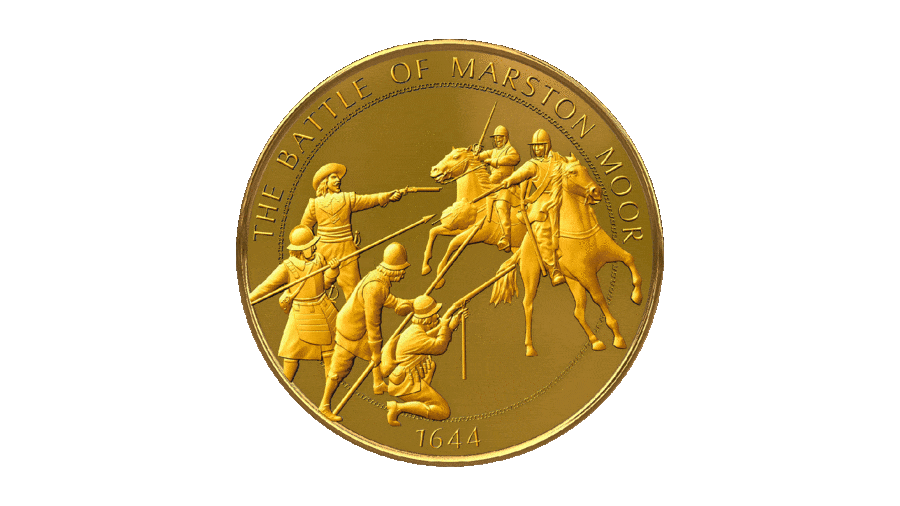
The Battle of Marston Moor took place on July 2, 1644. Two years after the outbreak of civil war in England, King Charles I was on the defensive in the north. The decisive battle fought outside York at Marston Moor gave parliament complete control of the north.
In spring 1644, a Royalist army led by the Marquis of Newcastle headed south to York, where it was soon besieged by a joint Parliamentary and Scottish force led by Sir Thomas Fairfax and the Earl of Leven. Charles, I ordered his nephew, Prince Rupert of the Rhine, to take forces and relieve the siege. Rupert's advance caused the Parliamentary army to break the siege and head out to meet the advancing Royalist army.
The two sides met at Marston Moor, 7 miles (11 km) from York. Both sides had around 7,000 cavalry, but the 11,000 Royalist infantry were easily outnumbered by the 20,000 combined Parliamentary and Scottish infantry. Each side drew up with infantry in the middle and cavalry on either wing. A short artillery exchange produced no movement, leading Prince Rupert to believe that battle would not be joined until the next day.
At 7:30 pm, however, Parliamentary forces attacked during a thunderstorm. A cavalry troop led by Oliver Cromwell—later nicknamed "Ironside" by Prince Rupert, attacked and defeated the Royalist cavalry on their right wing.
On their other wing, the Royalist cavalry, led by Lord George Goring, held back a Parliamentary cavalry charge and then smashed the Scottish infantry. Cromwell responded by turning in to attack Goring's cavalry in their rear, after which his cavalry helped the Parliamentary infantry to crush the Royalist centre.
As part of our commemorative coins and medals collection, you can now get this wonderful tribute to The Battle of Marston Moor, layered in beautiful 24-Carat Gold from just £14.99.
For more information, click the button bellow




コメント